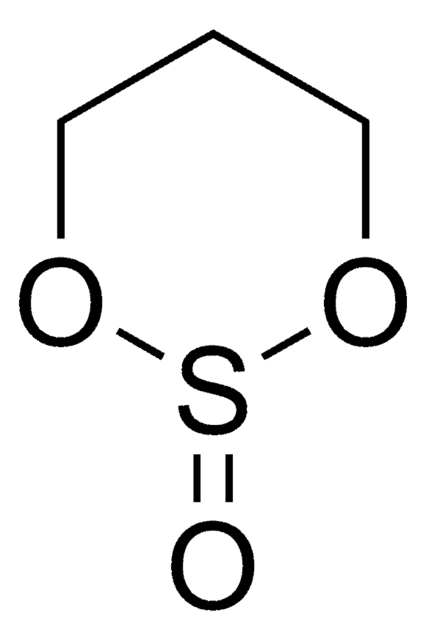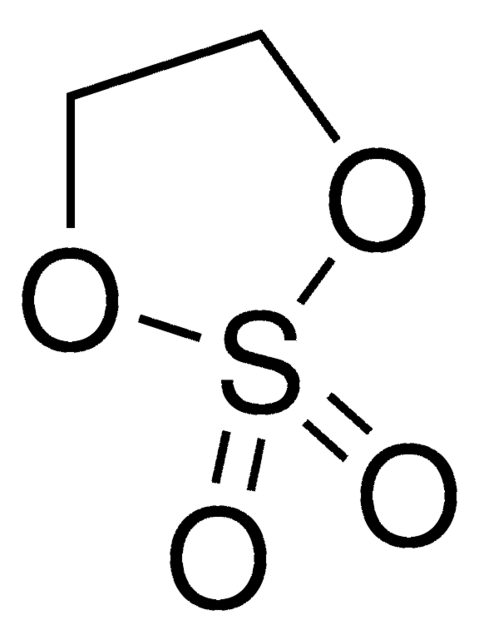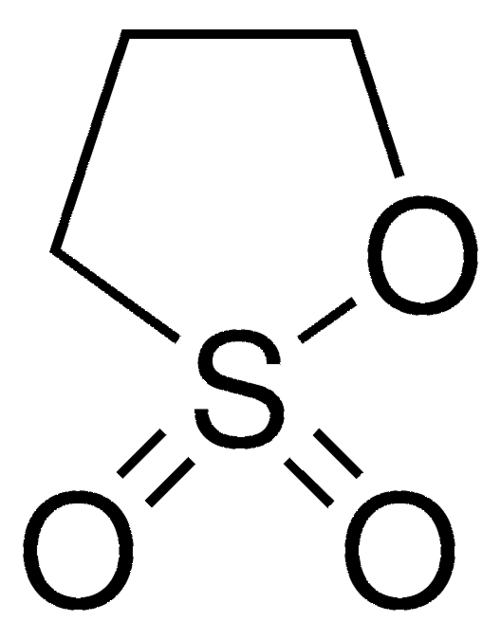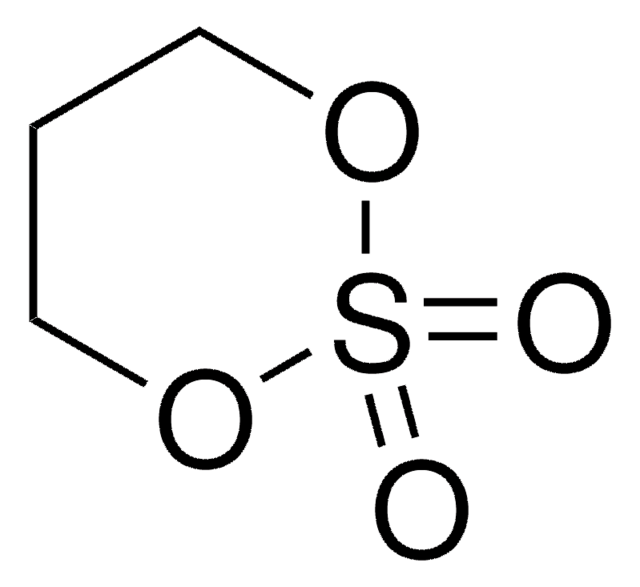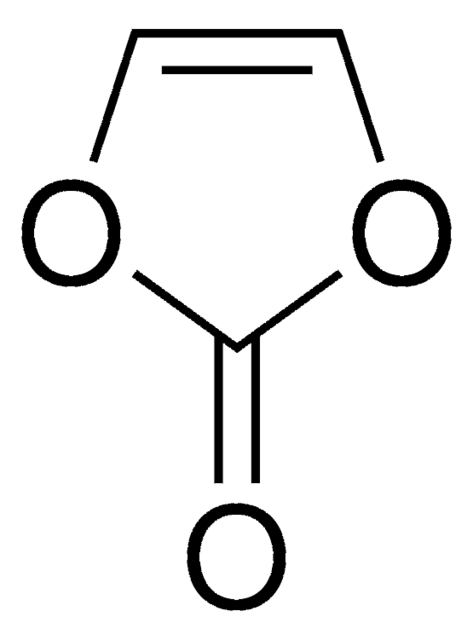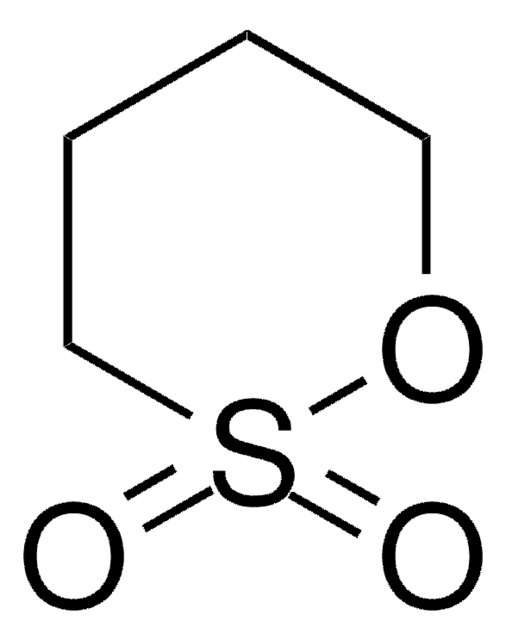774456
1,2-Propyleneglycol sulfite
≥98%
Sinónimos:
1,2-Propanediol cyclic sulfite, 4-Methyl-2-oxo-1,3,2-dioxathiolane, 4-Methyl-[1,3,2]dioxathiolane 2-oxide, PS, Propylene sulfite
About This Item
Productos recomendados
Nivel de calidad
Ensayo
≥98%
Formulario
liquid
características de los productos alternativos más sostenibles
Design for Energy Efficiency
Learn more about the Principles of Green Chemistry.
sustainability
Greener Alternative Product
índice de refracción
n20/D 1.437
bp
174-178 °C/760 mmHg
densidad
1.293 at 25 °C
aplicaciones
battery manufacturing
categoría alternativa más sostenible
, Enabling
cadena SMILES
CC1COS(=O)O1
InChI
1S/C3H6O3S/c1-3-2-5-7(4)6-3/h3H,2H2,1H3
Clave InChI
SJHAYVFVKRXMKG-UHFFFAOYSA-N
Categorías relacionadas
Descripción general
Aplicación
Producto relacionado
Palabra de señalización
Warning
Frases de peligro
Consejos de prudencia
Clasificaciones de peligro
Eye Irrit. 2
Código de clase de almacenamiento
10 - Combustible liquids
Clase de riesgo para el agua (WGK)
WGK 3
Punto de inflamabilidad (°F)
177.1 °F
Punto de inflamabilidad (°C)
80.6 °C
Elija entre una de las versiones más recientes:
Certificados de análisis (COA)
¿No ve la versión correcta?
Si necesita una versión concreta, puede buscar un certificado específico por el número de lote.
¿Ya tiene este producto?
Encuentre la documentación para los productos que ha comprado recientemente en la Biblioteca de documentos.
Los clientes también vieron
Artículos
Dr. Schmuch, Dr. Siozios, Professor Dr. Winter, and Dr. Placke review the challenges and opportunities of nickelrich layered oxide cathode materials. They discuss production processes for the layered oxide cathode materials as well as their chemistry and morphology.
Li-ion batteries are currently the focus of numerous research efforts with applications designed to reduce carbon-based emissions and improve energy storage capabilities.
The critical technical challenges associated with the commercialization of electric vehicle batteries include cost, performance, abuse tolerance, and lifespan.
Lithium-ion batteries (LIBs) have been widely adopted as the most promising portable energy source in electronic devices because of their high working voltage, high energy density, and good cyclic performance.
Nuestro equipo de científicos tiene experiencia en todas las áreas de investigación: Ciencias de la vida, Ciencia de los materiales, Síntesis química, Cromatografía, Analítica y muchas otras.
Póngase en contacto con el Servicio técnico